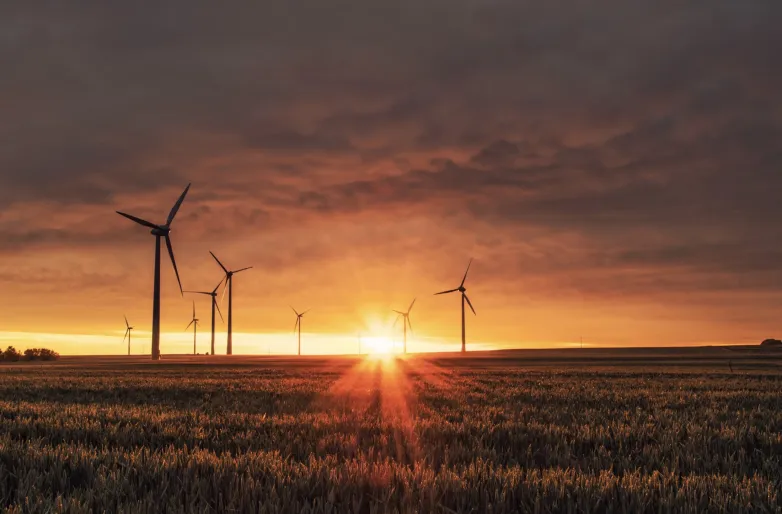The Academic Importance of Case Studies in Energy Efficiency

Energy efficiency is no longer just a buzzword - it's a key focus in global discussions about sustainability, climate change, and resource management. From reducing greenhouse gas emissions to lowering operating costs, efficiency strategies are essential for building a more sustainable future. But beyond its environmental and economic benefits, energy efficiency also holds significant academic importance.
Students, researchers, and policymakers use real-world examples to understand how theory translates into measurable results. This is where case studies play an important role. They offer practical, data-driven insights into how different solutions work in various contexts. For learners aiming to enter fields such as engineering, architecture, or environmental science, studying these real-world applications is essential.
Daniel Walker, a professional writer at Studyfy’s online essay writing service, says, ‘In academic work, the process often requires extensive research, detailed analysis, and well-structured writing. Access to learning tools and online essay writing services like Studyfy.com can help students manage these demands more effectively, ensuring that their reports on energy efficiency are not only well-researched but also clear, compelling, and professionally presented.’
How Case Studies Enhance Learning
Case studies provide a bridge between academic theory and practical implementation. While textbooks present general principles, case studies demonstrate those principles in action. Students can explore the challenges faced, the solutions tested, and the measurable results achieved.
This real-world context makes abstract concepts tangible. For example, a lecture on building insulation materials becomes far more engaging when paired with a study on how a school district cut heating costs by 30% through retrofitting older buildings.
Real-World Application in Energy Efficiency
Energy efficiency is a field rich with variables: climate, building materials, technology, budget, and human behavior all influence results. Academic case studies capture these variables, making them valuable for:
-
Understanding the interaction between technical solutions and environmental conditions
-
Identifying potential pitfalls before implementing new systems
-
Learning from the successes and mistakes of others
By studying existing projects, students and professionals can adopt proven strategies and avoid costly errors.
Benefits of Case Studies for Students
Incorporating case studies into academic work offers several educational benefits:
-
Critical thinking development - Students must evaluate data, question assumptions, and consider alternative approaches.
-
Problem-solving skills - Real-world problems often require creative solutions that balance cost, performance, and sustainability.
-
Research depth - Case studies often include technical details, financial data, and long-term performance results.
These skills go beyond the classroom, preparing students for careers where analytical thinking and evidence-based decision-making are essential.
Key Academic Advantages of Energy Efficiency Case Studies
-
Real-world validation of theoretical concepts
-
Access to measurable performance data for analysis
-
Exposure to diverse problem-solving approaches
-
Insight into the economic and environmental trade-offs of efficiency measures
-
Preparation for industry challenges through applied learning
These advantages make case studies a cornerstone of effective learning in sustainability and energy-related fields.
Linking Case Studies to Policy and Industry
The academic value of case studies isn't limited to students - they also inform policymakers, business leaders, and engineers. When governments design new efficiency regulations, they often look at documented successes and failures from previous projects.
For example, a city aiming to reduce energy consumption in public buildings might review studies on LED lighting retrofits, HVAC upgrades, or solar panel installations. These real-world results can shape regulations that are both ambitious and achievable.
Encouraging Innovation Through Analysis
Case studies don't just document what has been done - they inspire what could be done next. By analyzing previous efforts, students and researchers can identify gaps, propose new technologies, and design pilot programs to test innovative ideas.
For example, a study on energy-efficient data centers may inspire further research into heat recovery systems that use waste heat to power nearby buildings. This cycle of learning and innovation is a central part of academic progress.
The Global Dimension
Energy efficiency challenges and solutions vary across the world. A case study from a Scandinavian country, where heating is a major concern, will focus on insulation and heat recovery. A study from a tropical region might focus on cooling systems and ventilation design.
By examining international examples, students gain a broader perspective on how cultural, economic, and environmental factors influence energy decisions. This global awareness is especially valuable in an increasingly interconnected world.
Challenges in Using Case Studies
While case studies are powerful learning tools, they also present challenges. Some may lack transparency in reporting data, while others may omit key variables such as maintenance costs or community engagement efforts.
Students must learn to approach case studies critically, identifying any limitations in methodology or bias in reporting. This critical analysis ensures they apply lessons appropriately, adapting solutions to the unique conditions of their own projects.
Integrating Case Studies into Academic Projects
Universities and training programs can maximize the value of case studies by embedding them into coursework. Group projects, for instance, can involve dissecting a real-world project, identifying its strengths and weaknesses, and proposing alternative solutions.
Similarly, research papers that compare multiple case studies can uncover patterns and best practices across different contexts. This type of synthesis is especially useful for advancing both academic knowledge and practical applications.
Future of Energy Efficiency Case Studies
As technology advances, new opportunities for energy savings emerge - from AI-powered energy management systems to advanced materials that improve insulation. Each innovation offers a chance for fresh case studies that capture lessons learned during implementation.
Digital platforms also make it easier to share findings globally, allowing students and professionals to learn from projects they might never have discovered otherwise. As sustainability becomes a central concern worldwide, the volume and variety of available case studies will continue to grow.
Final Thoughts
By studying detailed, real-world examples, learners can better understand the complexities of efficiency projects, from technical design to human behavior. This understanding leads to more effective solutions, smarter investments, and greater environmental benefits.
As academic institutions and industries continue to collaborate, the role of case studies in shaping energy efficiency strategies will only expand.
Whether you are a student researching a project or a policymaker drafting legislation, the lessons contained in these studies are invaluable guides toward a sustainable future!
Also read
- How to Reduce Downtime in Solar Operations?
- Hyperparameter Tuning Good Practices for Robust Predictive Models
- 5 Critical Metal Forming Processes in Solar Panel Manufacturing
- Maximizing Efficiency with Low-Maintenance Solar Panel Systems
- Cyber Hygiene for Solar Companies: Protecting Your Data from Email Threats


